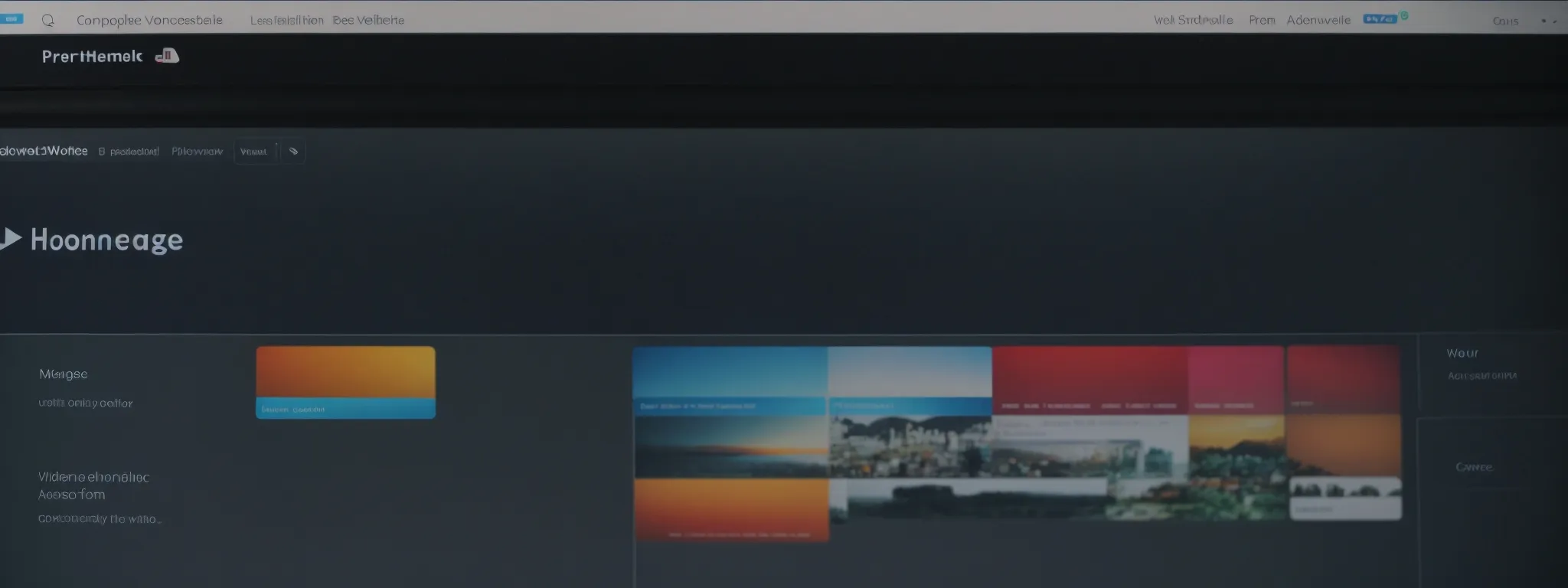Com vs Net SEO
Understanding the Impact of .Com vs .Net on SEO Success Selecting the perfect top-level domain (TLD) for a brand’s online presence can be a determinant of its […]
Understanding the Impact of .Com vs .Net on SEO Success
Selecting the perfect top-level domain (TLD) for a brand’s online presence can be a determinant of its Search Engine Optimization (SEO) success.
While common TLDs like .com and .net have been longstanding options, their influence on SEO results varies, raising essential questions for businesses looking to optimize their digital strategy.
This article delves into how these prevalent domains impact not only search engine rankings but also influence brand credibility and backlink acquisition efforts.
It further examines user behavior, distinguishing between the subtleties of local and global SEO in relation to domain extensions.
Keep reading to unlock insights into the strategic domain decisions that propel SEO forward.
Key Takeaways
- Domain Extensions Like .Com and .Net Can Influence SEO Rankings and User Engagement
- User Perceptions of .Com and .Net TLDs Can Impact Click-Through Rates and Conversions
- A Tailored SEO Strategy Can Mitigate the Perceived Disadvantages of .Net Domains
- Strategic Keyword Placement Is Crucial for Both .Com and .Net Domains to Succeed in SERPs
- LinkGraph’s SEO Services and Tools Can Enhance the Authority of Both .Com and .Net Domains
Exploring How .Com and .Net Affect SEO Rankings

In the intricate tapestry of search engine optimization, the choice of a domain extension can be akin to selecting the right thread that either complements or detracts from the overall design.
As businesses strive for digital prominence, the debate between .com and .net domains surfaces, warranting a discerning look at their influence on SEO rankings and user engagement.
Pivotal to a strong SEO strategy, the role of domain extensions in search algorithms merits attention, while the perceptions tied to these top-level domains (TLDs) equally affect user behavior and, consequently, the potential success of a website.
The Role of Domain Extensions in Search Algorithms
Within the complex algorithmic framework that search engines deploy to rank web pages, domain extensions like .com and .net can signal different levels of trust and authority. Search engines are known to associate .com domains with commercial credibility, potentially giving them an edge in the Search Engine Results Pages (SERPs).
On the flip side, .net extensions, often linked to network providers or technical enterprises, might not inherently boost SEO rankings, but they can still achieve favorable outcomes when coupled with robust SEO services and high-quality content. The distinction lies in how these TLDs are perceived by the algorithms and, importantly, how they are leveraged within an overall SEO strategy.
Perceptions of .Com Versus .Net in User Behavior
When individuals navigate the internet, the domain extension of a web address often serves as an implicit cue, guiding their expectations of the content they will encounter. A .com address might intuitively signal a commercial entity to a user, thereby fostering a sense of familiarity and trust that has been built over years of online experience. This intrinsic user accord with .com domains can indirectly bolster SEO efforts by prompting a higher click-through rate and improved engagement metrics.
Conversely, the perception of a .net domain may evoke more niche or specialized services, aligning with its historical connection to network and infrastructure companies. Despite this, when an organization adopts a .net domain and infuses it with authoritative content and strategic Search Engine Optimization, they can transcend typical user biases and cultivate an equally dedicated audience, thus mitigating the supposed SEO disadvantage posed by less universal TLDs.
Analyzing Keyword Performance for .Com vs .Net Domains

Discerning the distinctive impact of domain extensions on keyword success requires meticulous analysis and a comprehensive understanding of search engine behaviors.
Case studies focusing on the keyword rankings for .com and .net domains offer invaluable insights into this dynamic, revealing patterns and outliers that inform strategic optimization approaches.
As professionals dissect these studies and distill best practices, they empower businesses to navigate the domain landscape more effectively, ensuring their SEO efforts are not compromised by their choice of TLD.
This granular examination paves the way for tailored keyword strategies that align with the intrinsic strengths and perceptions of .com and .net domains, fostering digital visibility and competitive advantage.
Case Studies of .Com Versus .Net Keyword Ranking
Extensive research conducted by LinkGraph illustrates the disparities and nuances in keyword performance across .com and .net domains. Through the meticulous curation of data, LinkGraph’s SEO Services unveil how domain extensions influence rankings across various industries, showing a trend where .com domains frequently outperform their .net counterparts in broad-market scenarios.
However, LinkGraph’s case studies also highlight scenarios where .net domains hold their ground, particularly in specialized fields, signifying that a strategic SEO approach can overcome preconceived stigmas attached to domain extensions. The data further underscores the importance of an adaptive SEO strategy, as manifested in the Search Atlas SEO Tool, bolstering both .com and .net domains in respective niches.
Best Practices for Keyword Optimization on Different Domains
To secure a competitive edge in the SERPs, businesses with either .com or .net domains must give priority to strategic keyword placement within their content marketing efforts. This involves a Meticulous Selection of Keywords that not only aligns with the company’s industry and audience but also factors in the domain’s perceived authority and relevance.
LinkGraph’s sophisticated SEO services provide an edge by integrating advanced data analysis with the Search Atlas SEO tool, ensuring that regardless of the domain extension, the optimization of content remains tailored and targeted. This calibrated approach helps elevate the client’s web presence by boosting relevance and visibility to the intended audience.
The Influence of Domain Selection on Brand Credibility

Embarking on the digital journey of building a brand often begins with a pivotal decision: selecting a domain that will resonate with prospective clients and reinforce the integrity of the enterprise.
The domain name, serving as the digital moniker of a business, can accessorize the brand narrative with implications of trustworthiness and professional stature.
Grasping how .com and .net extensions can influence user perception is essential, as these seemingly minor elements can cast a long shadow on click-through rates and the overall engagement experience.
This section examines the trust factors associated with these prevalent TLDs and evaluates their potential impact on fostering meaningful interactions with users.
Assessing Trust Factors Associated With .Com and .Net
In the realm of digital trust, the .com domain extension evokes a sense of established presence and reliability: a testament to its longevity and prevalence in the online business domain. The commonality and recognition of .com domains often translate into an inherent trust from users, which can be a decisive factor in the success of a brand’s online identity.
Conversely, the .net domain, while historically associated with technology-oriented organizations, may not immediately invoke the same level of user trust. Yet, a .net domain maintained with professionalism and bolstered by high-caliber SEO practices, such as those provided by LinkGraph, can cultivate its own sphere of credibility among its target audience.
- Ingrained user trust benefits .com domains in brand recognition and SEO leverage.
- .Net domains can achieve trust through professional presence and specialized SEO strategies.
Impact on Click-Through Rates and User Engagement
The domain extension an organization chooses can significantly sway click-through rates, as users often gravitate towards web addresses that convey credibility. With a .com extension typically associated with commercial and established entities, websites with such domains may experience higher click-through rates, due to the extension’s widespread recognition and trust among internet users.
Engagement levels on a website are intricately tied to the domain extension, affecting how long and how deeply users interact with the site’s content. While .com domains might inherently promise broader appeal, .net websites that present strong, relevant content, supported by LinkGraph’s Strategic SEO Optimization, have the potential to sustain user engagement that rivals even the most trusted .com sites.
Does Domain Extension Affect Backlink Building Strategies?

The digital terrain is fiercely competitive, where successful search engine positioning hinges not only on intrinsic SEO practices but equally on robust backlink profiles.
Whether navigating the .com or .net terrains, the art of backlink acquisition remains a cornerstone of SEO success.
The process varies subtly between domains, influenced by the perceived authority and networking potentials each TLD embodies.
In this section, we will elucidate effective techniques for garnering quality backlinks for .com domains, known for their universal appeal, and delve into strategic measures designed to amplify .net domain authority through equally compelling backlink strategies.
Techniques for Acquiring Backlinks for .Com Domains
For .com domains, the quest for quality backlinks begins with leveraging their established reputation. Professionals engage in Curated Outreach, presenting compelling value propositions to reputable websites and influencers that align with their business model and customer base.
Employing content that resonates with a target audience paves the way for natural link acquisition:
- Insightful blog posts attract attention and encourage sharing within the community.
- Infographics and resourceful guides garner links as reference materials in other articles.
- User-generated content, such as comments and testimonials, fosters credibility and prompts organic backlink growth.
These strategies, amplified by LinkGraph’s Prowess in SEO and digital marketing, enhance the .com website’s authority, steering the domain toward a robust backlink profile that contributes significantly to its SEO stature.
Strategies to Boost .Net Domain Authority With Backlinks
Curating backlinks for .net domains necessitates a strategic, pinpointed approach that emphasizes the domain’s uniqueness and technical inclination. LinkGraph, as a leading provider of SEO services, distinctly understands this challenge, tailoring link-building campaigns that highlight the specialized content and innovative solutions characteristic of .net websites, thereby attracting a relevant and engaged audience that is willing to link back to these resources.
LinkGraph utilizes a bespoke blend of outreach, relationship-building, and content marketing to enhance the perceived value of .net domains among industry peers and authorities. This focused tactic not only elevates the domain’s authority within its niche segment but also garners high-quality backlinks that reinforce the domain’s standing in search engines, catalyzing a notable improvement in its SEO performance.

In the pursuit of mastering the nuances of search engine optimization, businesses face the strategic challenge of leveraging their top-level domains (TLDs) to cater to both international and local search landscapes.
The distinction between utilizing a .com or a .net TLD carries significant weight in the digital arena, underscoring the importance of domain choices in ushering a website’s global reach while simultaneously enabling precise targeting in local markets.
As this section unfolds, it will shed light on the fine-tuning required in a domain strategy to enhance SEO efficacy, balancing the scales between a universal brand presence with .com and the community-focused relevance that .net may offer within regional SEO campaigns.
Utilizing .Com and .Net for Targeting International Audiences
For businesses aiming to project a global presence, selecting the right TLD is a tactical aspect of an international SEO strategy. A .com domain, with its widespread recognition, often serves as the default TLD for businesses seeking a borderless appeal, making it increasingly palatable to a wide international audience.
Meanwhile, the .net extension, though less ubiquitous, presents a valuable opportunity when organizations position themselves as industry innovators or niche service providers on the global stage. Expertly executed SEO campaigns by services like LinkGraph can Enhance the International Visibility of a .net domain, effectively targeting and engaging specific demographics worldwide.
Tweaking Your Domain Strategy for Local SEO Impact
For businesses focusing on local search dominance, fine-tuning the choice of TLD is a tactical nuance with a direct impact on local search relevancy. A .com domain may offer broad commercial appeal, but for specific local markets, a carefully chosen TLD can resonate more deeply with regional audiences, forging a stronger connection with local users and customer bases.
Adopting a .net domain can prove advantageous for entities integral to localized network services, embodying a sense of community ethos. The right blend of this domain with Targeted Local Keywords and culturally aligned content can significantly elevate a business’s standing in local search rankings:
- Localized content should echo regional vernacular and service needs.
- Collaborations with local influencers mark a brand’s commitment to community relevance.
- Citations in local directories fortify a website’s connection to its targeted locality.
Understanding User Perception and Behavior With .Com and .Net

In the ever-evolving realm of digital marketing, perception is power.
Understanding how potential customers view different domain extensions—a .com versus a .net—can be the linchpin in not only attracting users but converting their visits into tangible business success.
This analysis peels back the layers of user perceptions rooted in these ubiquitous top-level domains (TLDs), exploring the subtle yet consequential biases that could tip the scales in favor of a .com extension and its impact on conversion rates—a critical metric for any business website striving for optimal performance within the fierce competition of the online landscape.
How Users Perceive .Com and .Net Domains Differently
User perception of domain extensions plays a significant role in the credibility and approachability of a website. A .com domain typically conveys an air of authority and establishment, as it’s commonly associated with well-entrenched businesses that have a global footprint: these domains are often synonymous with tradition and reliability in the minds of users.
In contrast, a .net domain might cast a more specialized or niche impression, appealing to a user base that anticipates technical content or community-oriented services. These domains can serve as a beacon for users seeking specific industry expertise or community-focused entities, setting the stage for a more targeted and informed audience engagement.
- .Com domains connote mainstream appeal and broad-based trust.
- .Net domains suggest niche specialization and community engagement.
Conversion Rates: The .Com Advantage Over .Net?
Exploring conversion rates offers significant insights into the preferential impact of domain choice on website success. A .com domain, widely recognized and trusted, tends to outperform its .net counterpart in converting visitors into customers or leads, thanks to its more expansive commercial reach and user familiarity.
This trend, however, is not a steadfast rule, as Strategic SEO Implementation can sometimes level the playing field. LinkGraph exemplifies how focused and data-driven optimization strategies can elevate a .net domain’s conversion potential by aligning it more closely with the specific interests of its audience.
- .Com domains frequently exhibit higher conversion rates due to widespread recognition.
- .Net domains, when paired with strategic SEO, can achieve comparable conversion success.
Conclusion
In conclusion, the impact of .com versus .net on SEO success is multifaceted and significant.
While .com domains generally enjoy a reputational advantage in terms of commercial credibility and user trust, leading to potentially better SEO rankings and higher conversion rates, this does not render .net domains inferior in the digital race.
Through strategic SEO practices and high-quality content, .net domains can overcome user bias and establish their own authoritative presence in niche markets.
The ability to navigate these top-level domains effectively is crucial for businesses, as it influences not only search algorithm perceptions but also user engagement and click-through rates.
Ultimately, whether opting for a .com or a .net, the key to SEO success lies in understanding and leveraging the unique strengths and perceptions associated with each domain extension.













































































